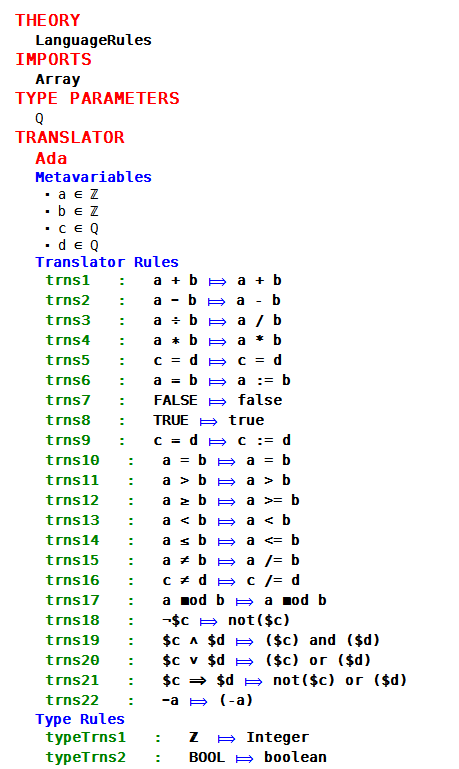The Use of Theories in Code Generation: Difference between revisions
From Event-B
Jump to navigationJump to search
imported>Andy No edit summary |
imported>Andy |
||
| Line 2: | Line 2: | ||
The theory plug-in is used to add mathematical extensions to Rodin. The theories are created, and deployed, and can then be used in any models in the workspace. When dealing with implementation level models, such as in Tasking Event-B, we need to consider how to translate newly added types and operators into code. We have augmented the theory interface with a Translation Rules section. This enables a user to define translation rules that map Event-B formulas to code. | The theory plug-in is used to add mathematical extensions to Rodin. The theories are created, and deployed, and can then be used in any models in the workspace. When dealing with implementation level models, such as in Tasking Event-B, we need to consider how to translate newly added types and operators into code. We have augmented the theory interface with a Translation Rules section. This enables a user to define translation rules that map Event-B formulas to code. | ||
=== Translation Rules=== | === Translation Rules=== | ||
Figure | Figure 1 shows the interface, and some translations rules of the mapping to Ada. | ||
<div id="fig:Translation Rules"> | <div id="fig:Translation Rules"> | ||
Revision as of 08:34, 15 May 2012
The Theory Plug-in
The theory plug-in is used to add mathematical extensions to Rodin. The theories are created, and deployed, and can then be used in any models in the workspace. When dealing with implementation level models, such as in Tasking Event-B, we need to consider how to translate newly added types and operators into code. We have augmented the theory interface with a Translation Rules section. This enables a user to define translation rules that map Event-B formulas to code.
Translation Rules
Figure 1 shows the interface, and some translations rules of the mapping to Ada.
